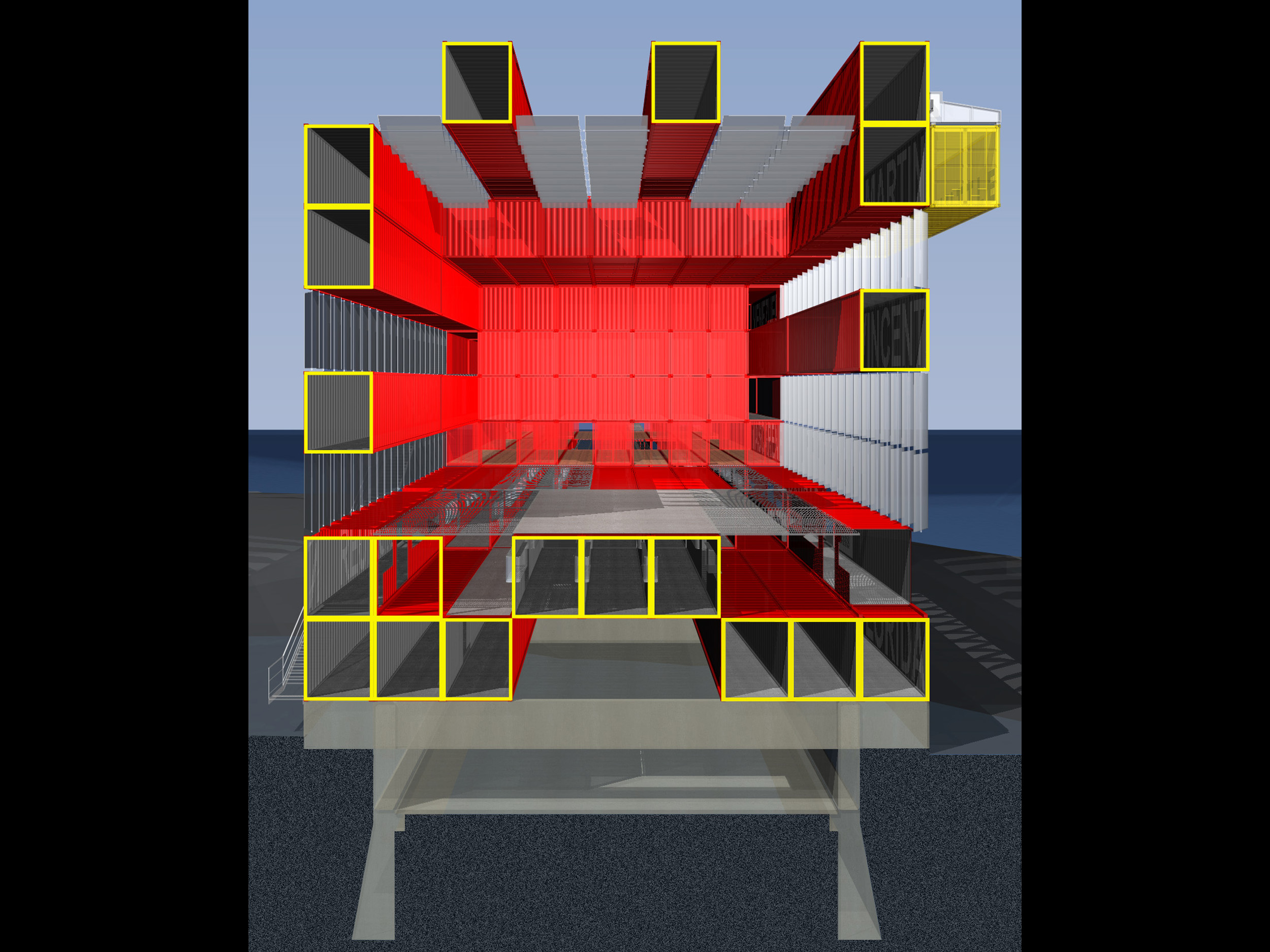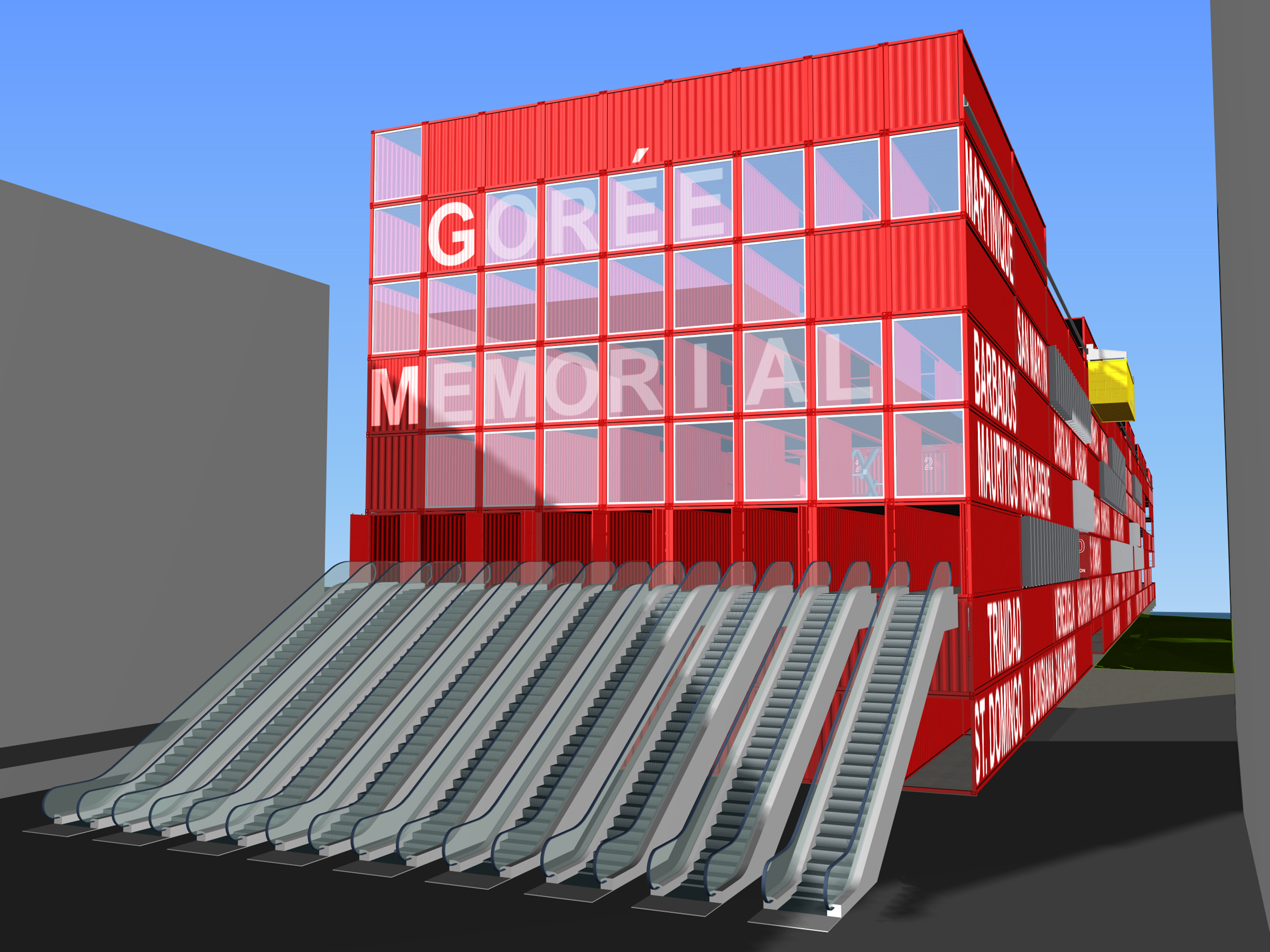










GOREE MEMORIAL AND MUSEUM
A single architectural concept unites the Memorial and the Museums/Research Center, capturing both the brutality of the slave trade and the excitement of trans-Atlantic exploration during the discovery of the "New World."
The design aspires to monumental significance. At the territorial scale, it marks the meeting of earth and water at Africa’s westernmost point. At the urban scale, it intrudes from the ocean into the fabric of Dakar. On an experiential level, it guides visitors through a journey of interior and exterior spaces, modulating the intensity of their experience.
The Memorial itself is a monolithic structure, suspended between land and sea. Projecting into the ocean or penetrating the land, it symbolizes a truncated link between Black Africa and the Black Americas—poised between movement and stillness.
Constructed entirely of shipping containers, the Memorial employs these elements as symbols of global trade, movement, oppression, and confinement. Inscribed with the names of destinations tied to the slave trade and exploration journeys, the containers form the core building blocks. As "spatial bricks," they are pierced, stacked, and combined to define both intimate interiors and expansive halls, adapting to the varied programmatic needs.
The Memorial’s design is conceived as layers of containers, each corresponding to different functions and interlocking to create a unified horizontal prism. The visitor’s spatial experience alternates between the narrow, tunnel-like interiors of individual containers and the open expanses of container-defined halls.
- Slave Trade Museum: Located in the lower levels, this space evokes the oppressive atmosphere of a ship’s hold. Its labyrinthine corridors and fragmented halls recreate the claustrophobic density of a slave-trading vessel. Pierced containers allow cross-circulation and natural illumination, while embedded glass showcases display artifacts and narratives.
- Navigation Museum: Above the Slave Trade Museum, this layer contrasts narrow corridors with expansive halls, where large openings offer views of the ocean, land, and sky. This rhythmic alternation mirrors the surprise of discovery and the excitement of exploration.
The upper four layers house temporary exhibitions, a research center, and offices, overlooking the Navigation Museum's halls.
By weaving together spatial and emotional experiences, the Memorial and Museums become a powerful representation of history, exploration, and memory, rooted in the unique interplay of form, function, and symbolism.
Credits
Client: GOREE MEMORIAL & MUSEUMType: Slave trade and Navigation Memorial and Museums
Location: Dakar, Senegal
Design: 1996
Competition in collaboration with Florian Oberhuber of Urban Edition Inc.
